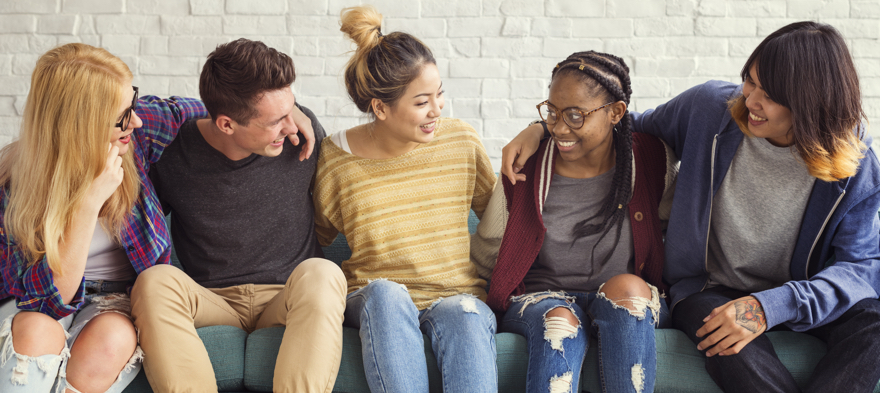
If you look up the word “visibility” in the dictionary, you get quite a few definitions including, “The ability to see or be seen.” When I was 12 years old, I remember feeling invisible because of my struggles with my identity. I learned much later what the term “non-binary” meant, but while I was in school, [pullquote position="right"]I never learned or read about people who felt like me. I felt completely alone.[/pullquote]
I became a teacher for a few reasons, my passion for the profession being the main one. But as I reflected on my early educational experiences, I realized that I also became a teacher because I wanted my students to be seen in ways that I never was in middle school.
LGBTQ+ topics are often ignored or avoided in school because they are seen as “taboo” or “inappropriate.” When we adopt this stance, we are silently telling our students that anything outside of the heteronormative culture we have built in society is wrong. And nothing could be further from the truth. Students need, and deserve, a safe place to explore their feelings.
Gender and Sexuality Alliances (GSAs) were created to help combat homophobic bullying in school and educate/advocate for healthier school communities. Unfortunately, our LGBTQ+ students often face different forms of bullying and harassment. According to a national study, “95% of LGBTQ+ students have heard homophobic remarks directed at them.” However, schools with GSAs have shown reductions in bullying and homophobic remarks, making the argument for GSAs in schools overwhelmingly positive.
While GSAs are more common in high schools, there is a growing movement of GSAs at the middle school level. My middle school started its own GSA, “Free to Be,” this past year. I was fortunate enough to witness the effects of our GSA on my students and school community.
Free to Be consists of sixth, seventh, and eighth graders. These students never really interacted outside their grade groups before, but after about three meetings, it was not uncommon to find them together in the halls or outside after school. They greeted each other with smiles and hugs, and my room was full of laughter as they worked on various projects for Free to Be.
There is one particular interaction that I will never forget. A seventh grader decided to join late, but when she came into my room, she was clearly nervous. The other kids were already talking and catching up when she came in. One of the eighth graders noticed her standing in my doorway and asked, “Are you here for Free to Be?” She nodded shyly. The eighth grader walked over, flashed a massive smile and said, “Welcome to our family.”
In the few short months that Free to Be existed, we really had become a family. [pullquote]We built a culture where it was okay to ask questions, discuss journeys and vent about frustrating incidents.[/pullquote]
The effects of Free to Be rippled outside of my classroom on Tuesday afternoons. While homophobic bullying has not been eradicated, the kids reported that it has decreased since the GSA formed. More students were beginning to be open about their gender and sexual identities. I alone had six students come out to me in the span of three months, and two other teachers shared that students came out to them as well.
As we reflected on the GSA at the end of the year, I asked what students thought was most beneficial about it. They really loved the space to just be open and unequivocally themselves. But one student gave an answer that made my past middle school self so happy:
“We finally feel seen.”
Ace Schwarz teaches seventh-grade science at Springfield Middle School in Williamsport, Maryland. Ace identifies as non-binary and uses they/them/theirs pronouns. They received the honor of being GLSEN’s Educator of the Year for 2019. Ace is passionate about providing teachers with resources to help make their classrooms inclusive for students. They use Instagram as a platform to share resources such as "The ABCs of LGBTQ+," a comprehensive guide to various LGBTQ+ terms and definitions. They also created LGBTQ+ book lists for elementary, middle and high school that were written by LGBTQ+ authors.
If you have a child with disabilities, you’re not alone: According to the latest data, over 7 million American schoolchildren — 14% of all students ages 3-21 — are classified as eligible for special...
The fight for educational equity has never been just about schools. The real North Star for this work is providing opportunities for each child to thrive into adulthood. This means that our advocacy...
The story you tell yourself about your own math ability tends to become true. This isn’t some Oprah aphorism about attracting what you want from the universe. Well, I guess it kind of is, but...
Your donations support the voices who challenge decision makers to provide the learning opportunities all children need to thrive.
Ed Post is the flagship website platform of brightbeam, a 501(c3) network of education activists and influencers demanding a better education and a brighter future for every child.
© 2020–2024 brightbeam. All rights reserved.